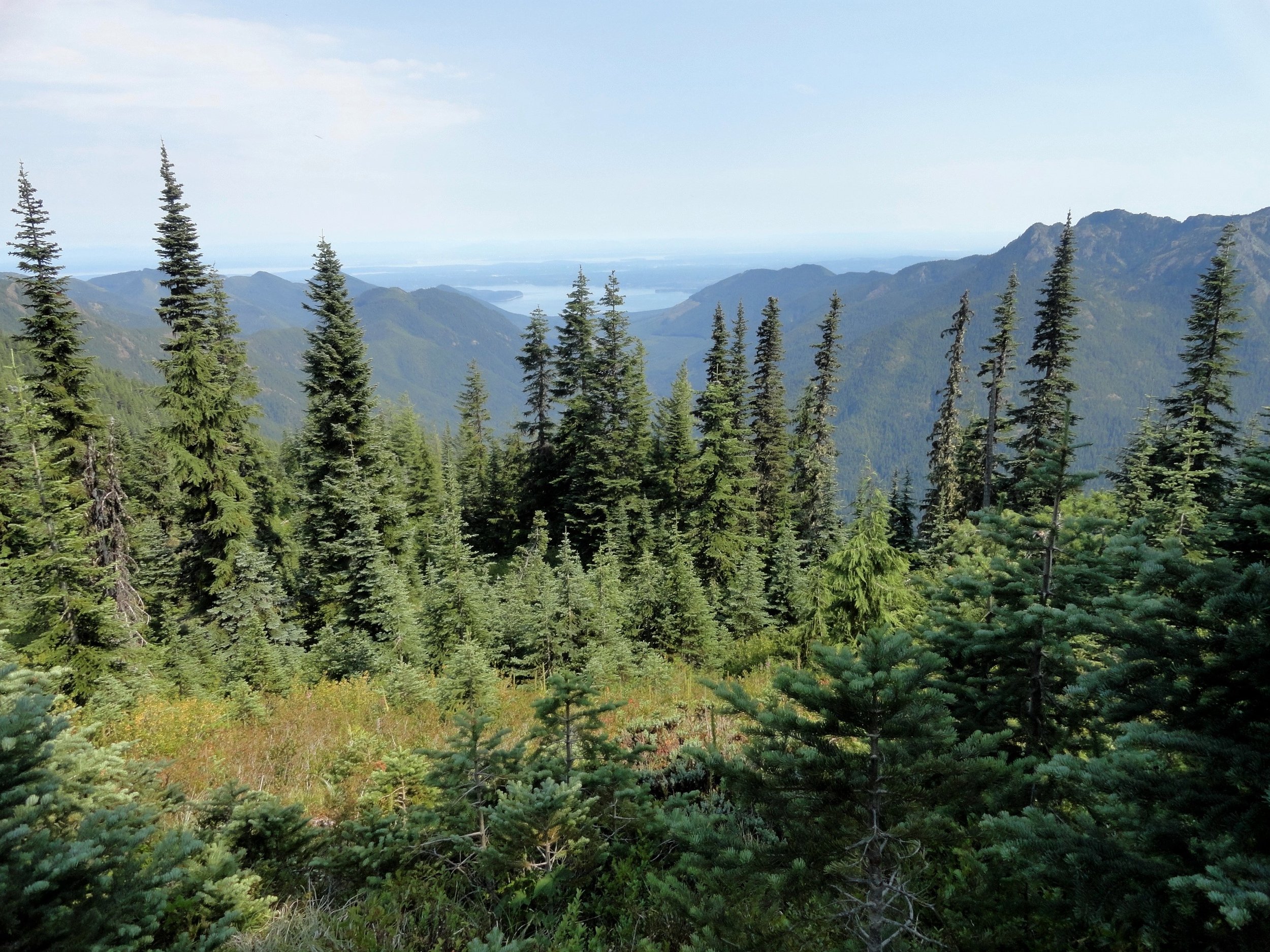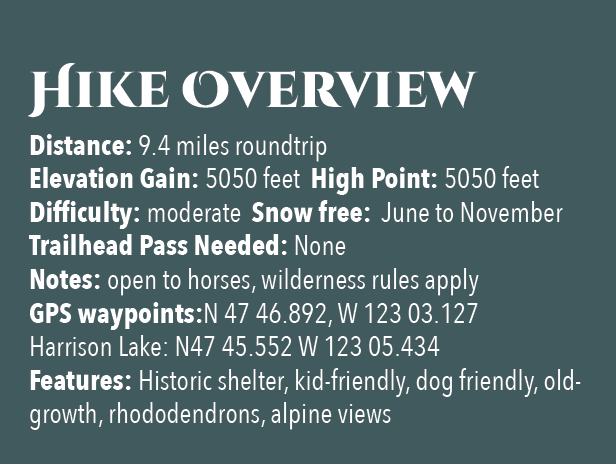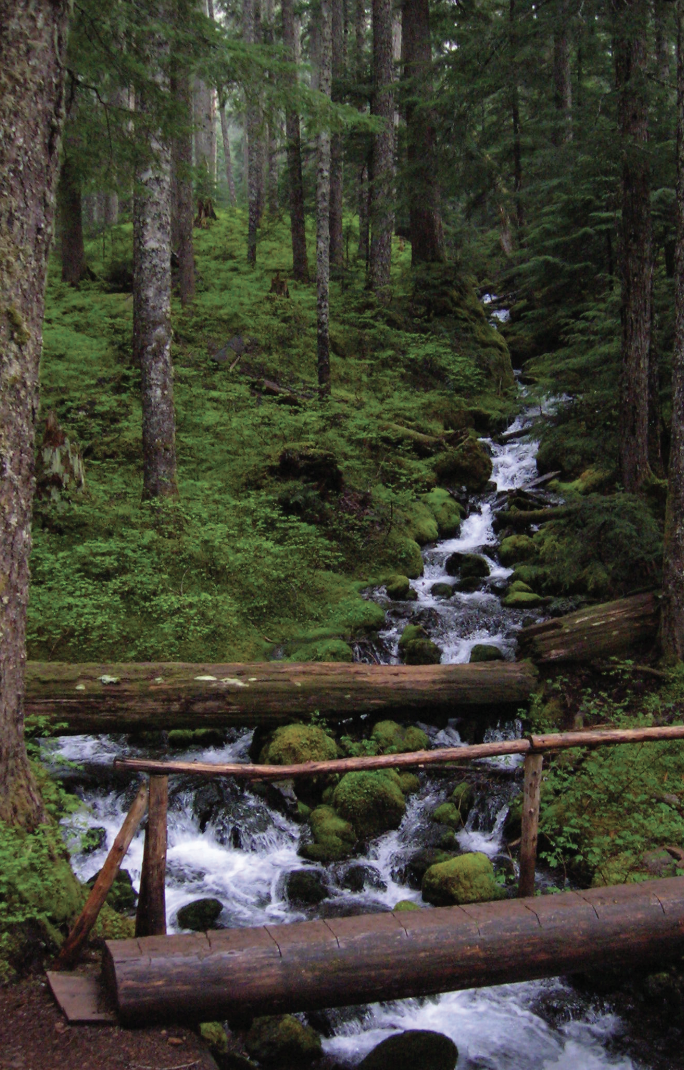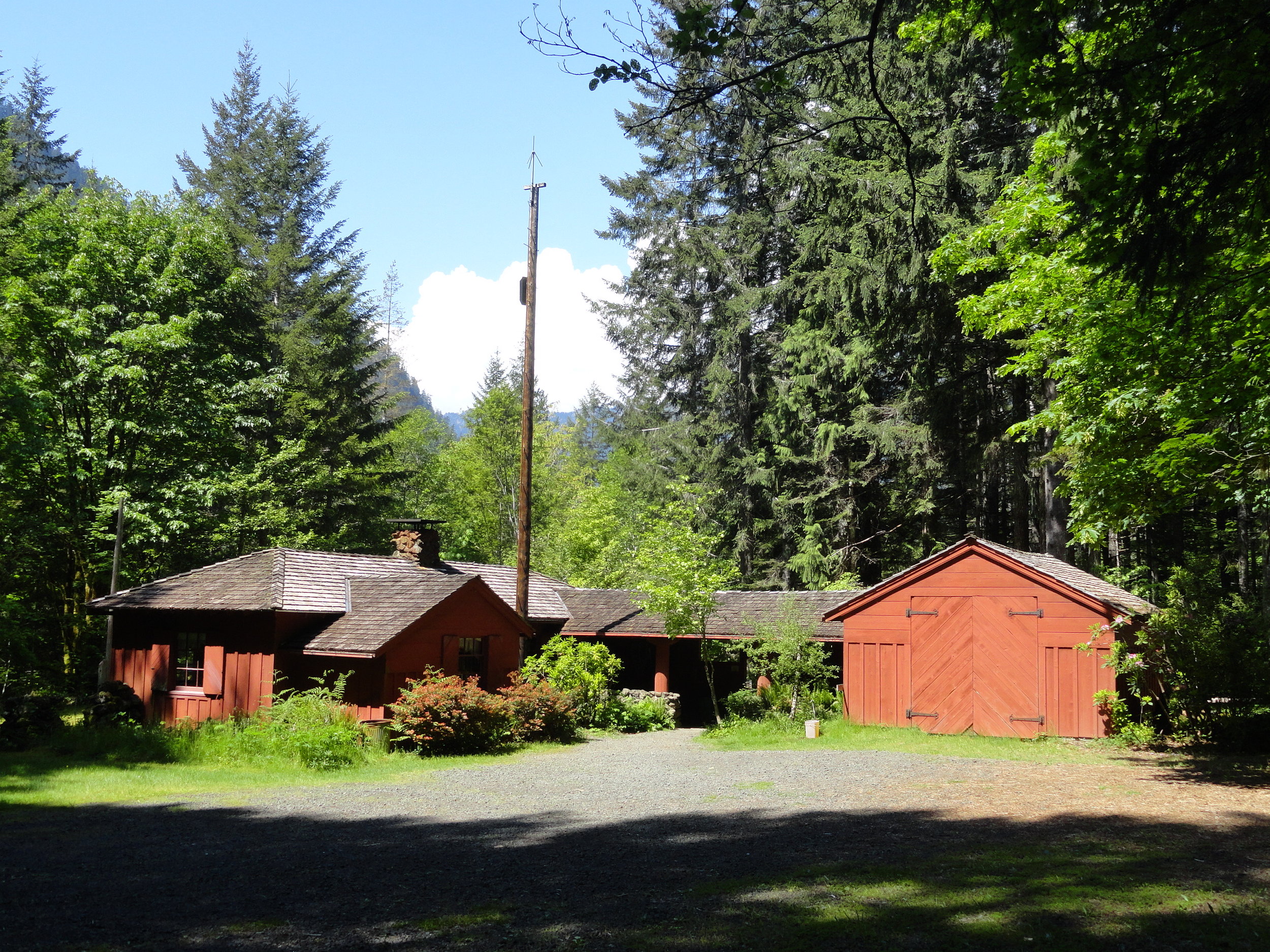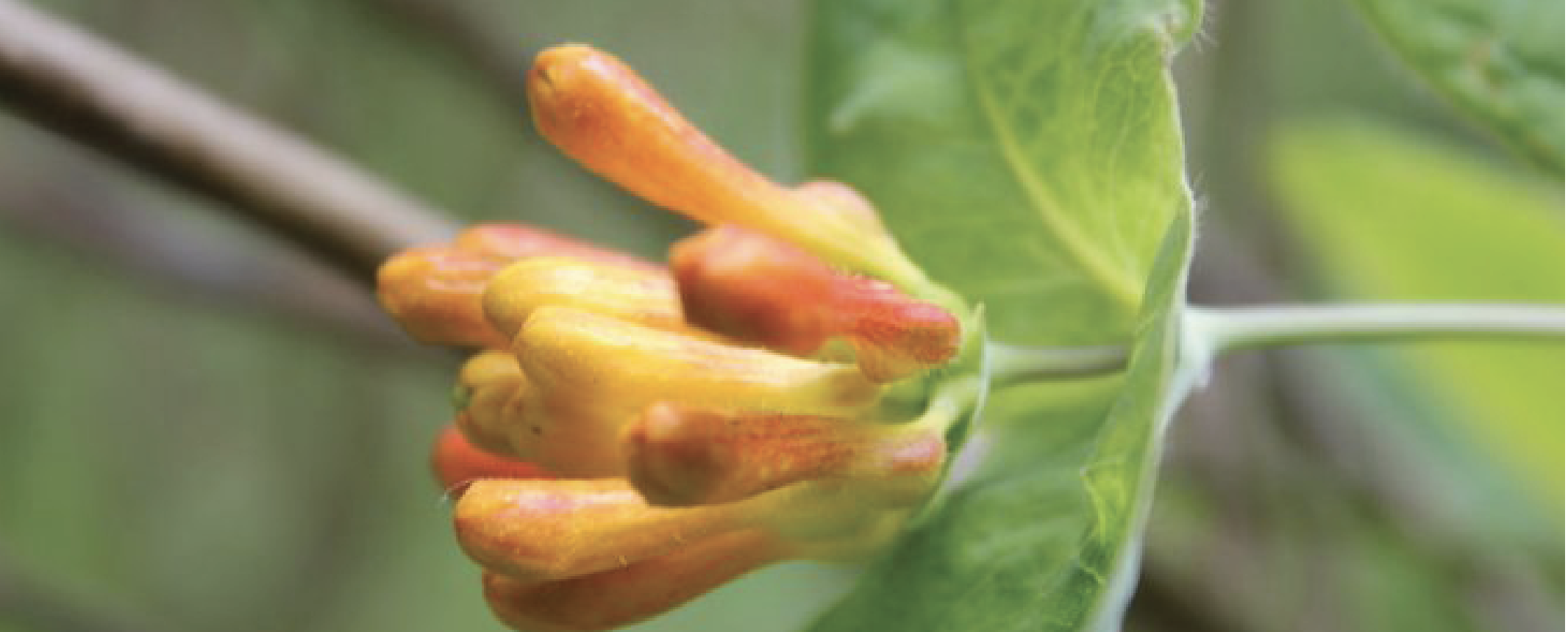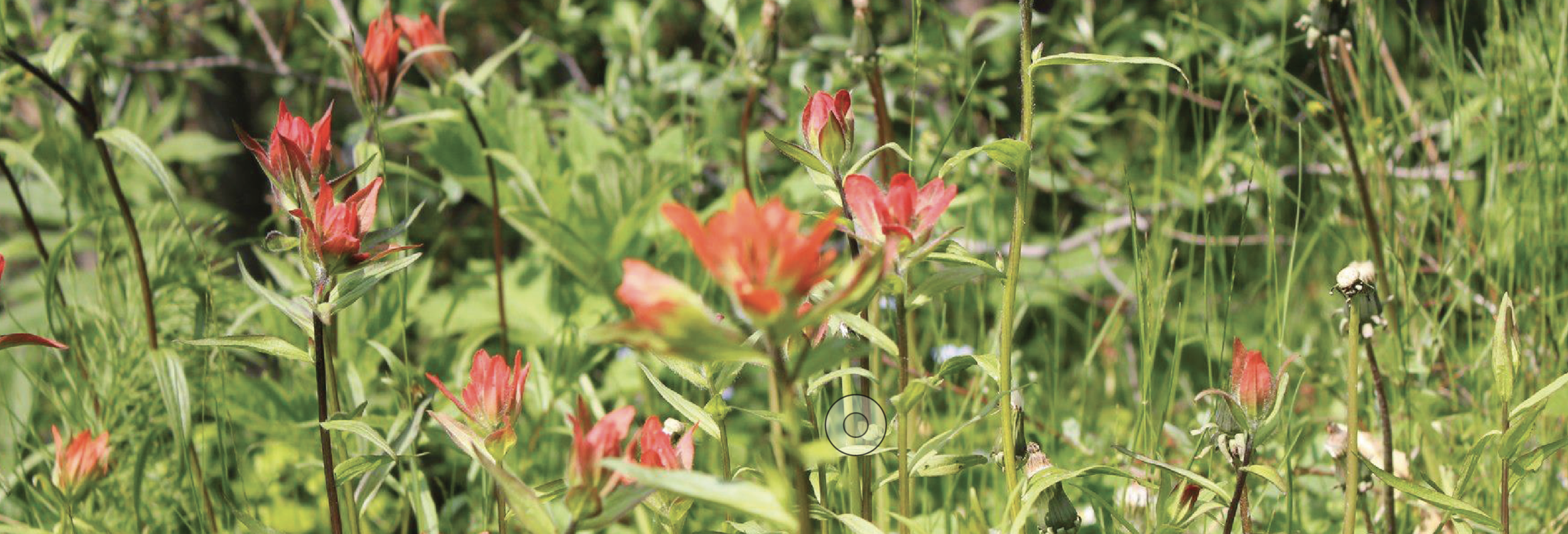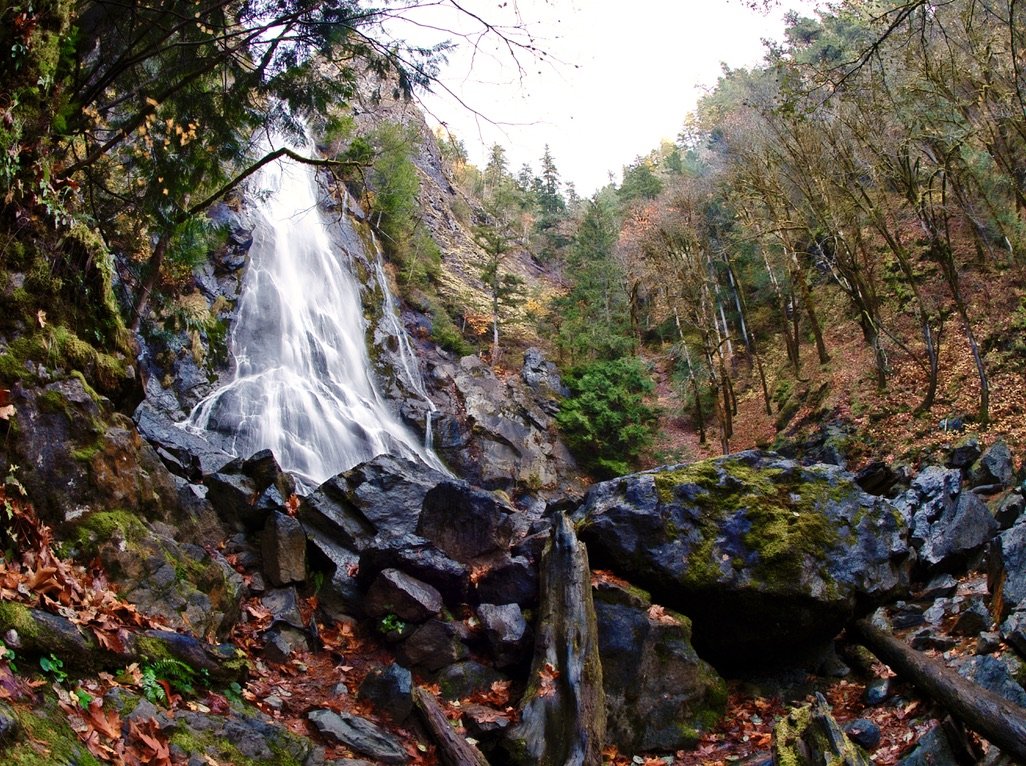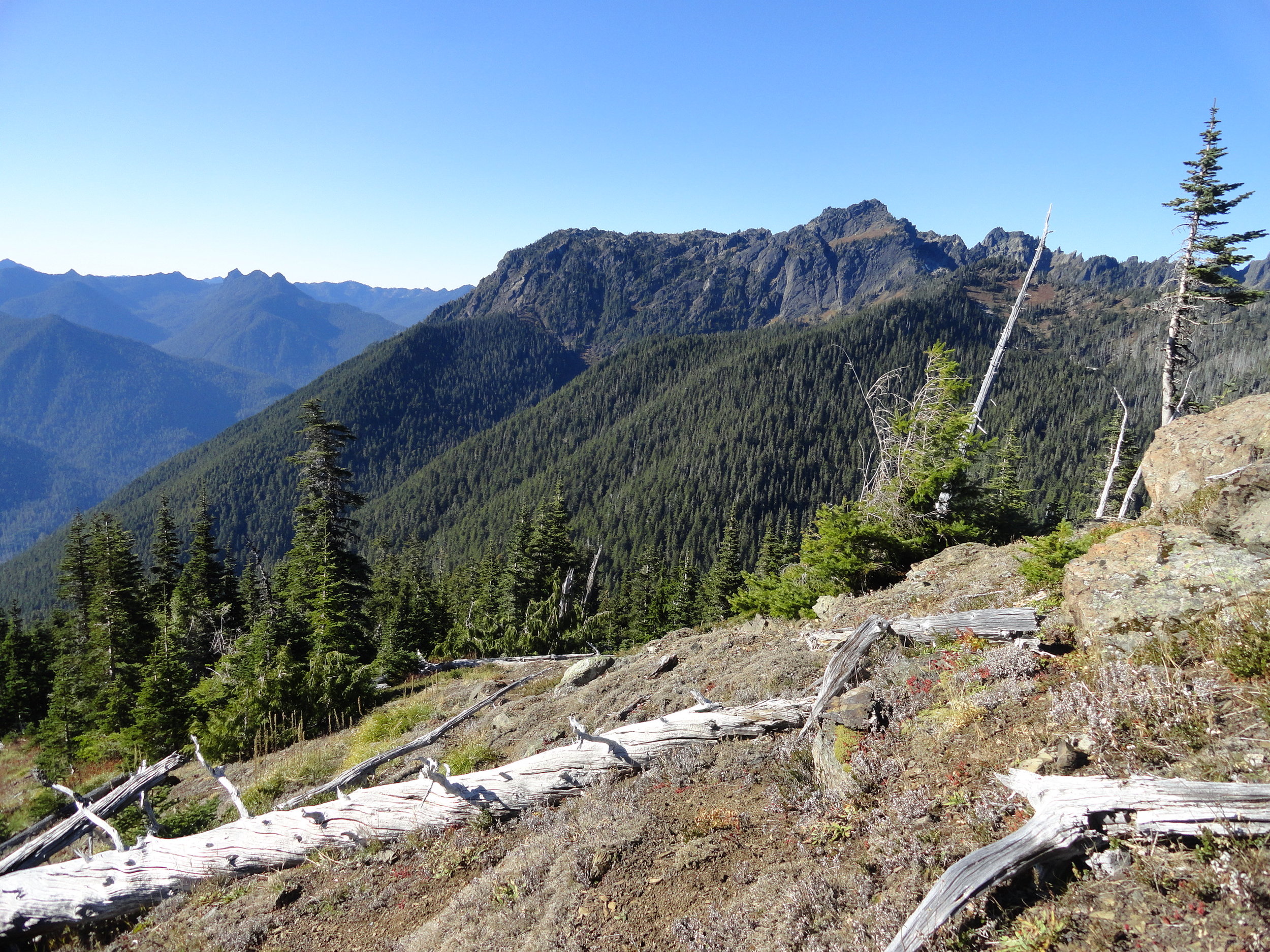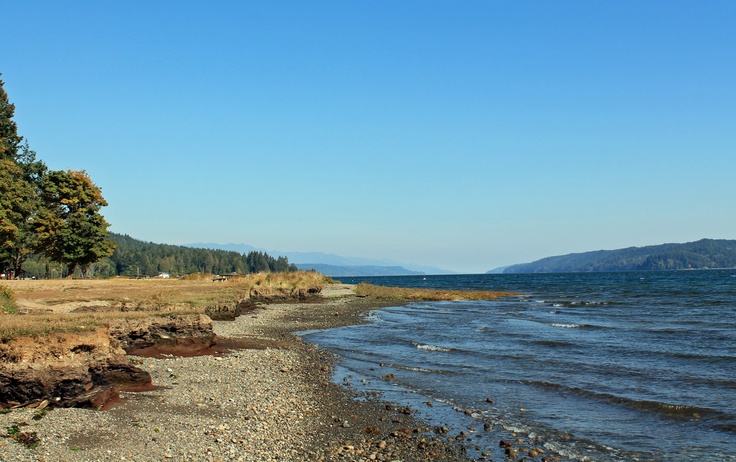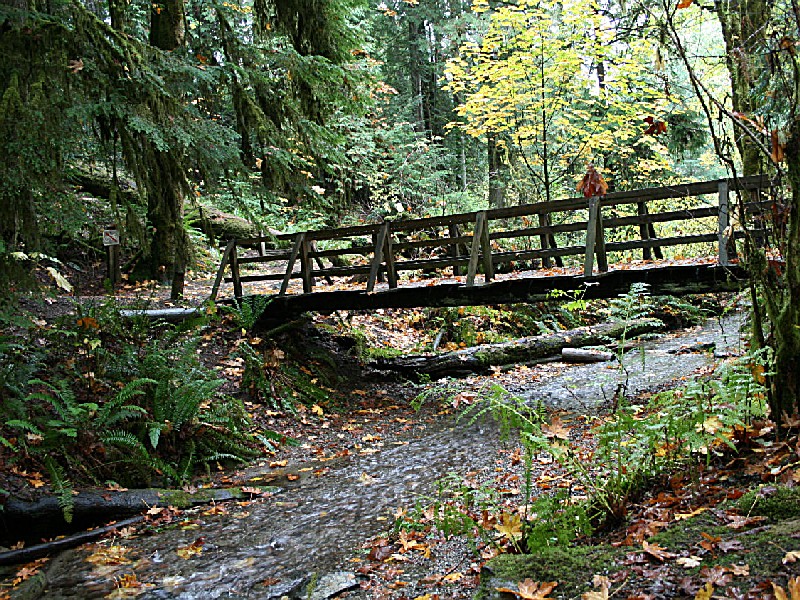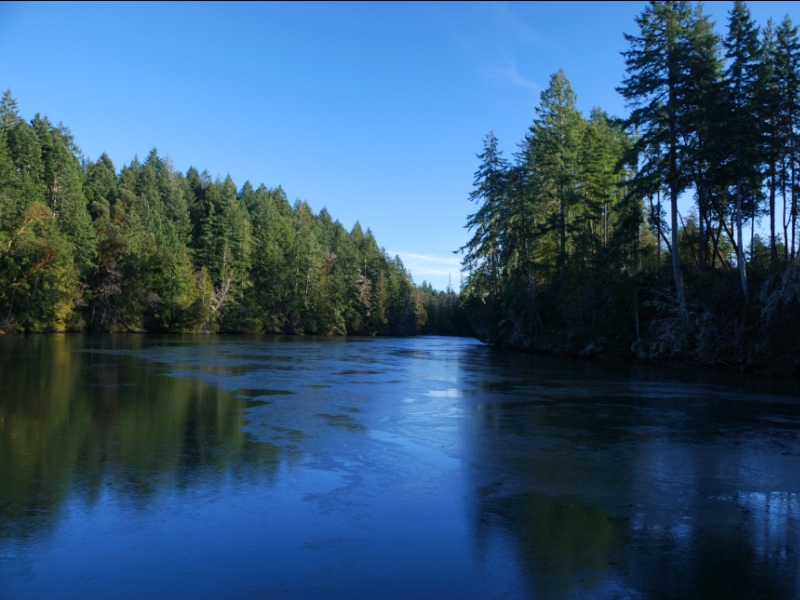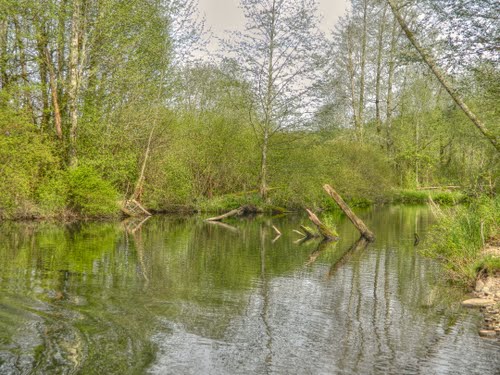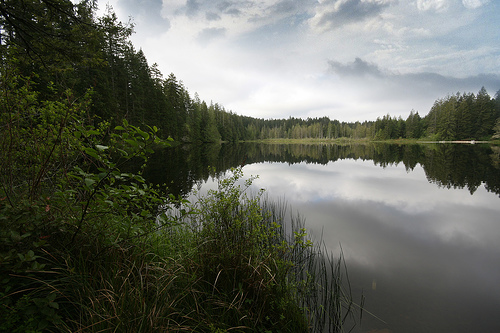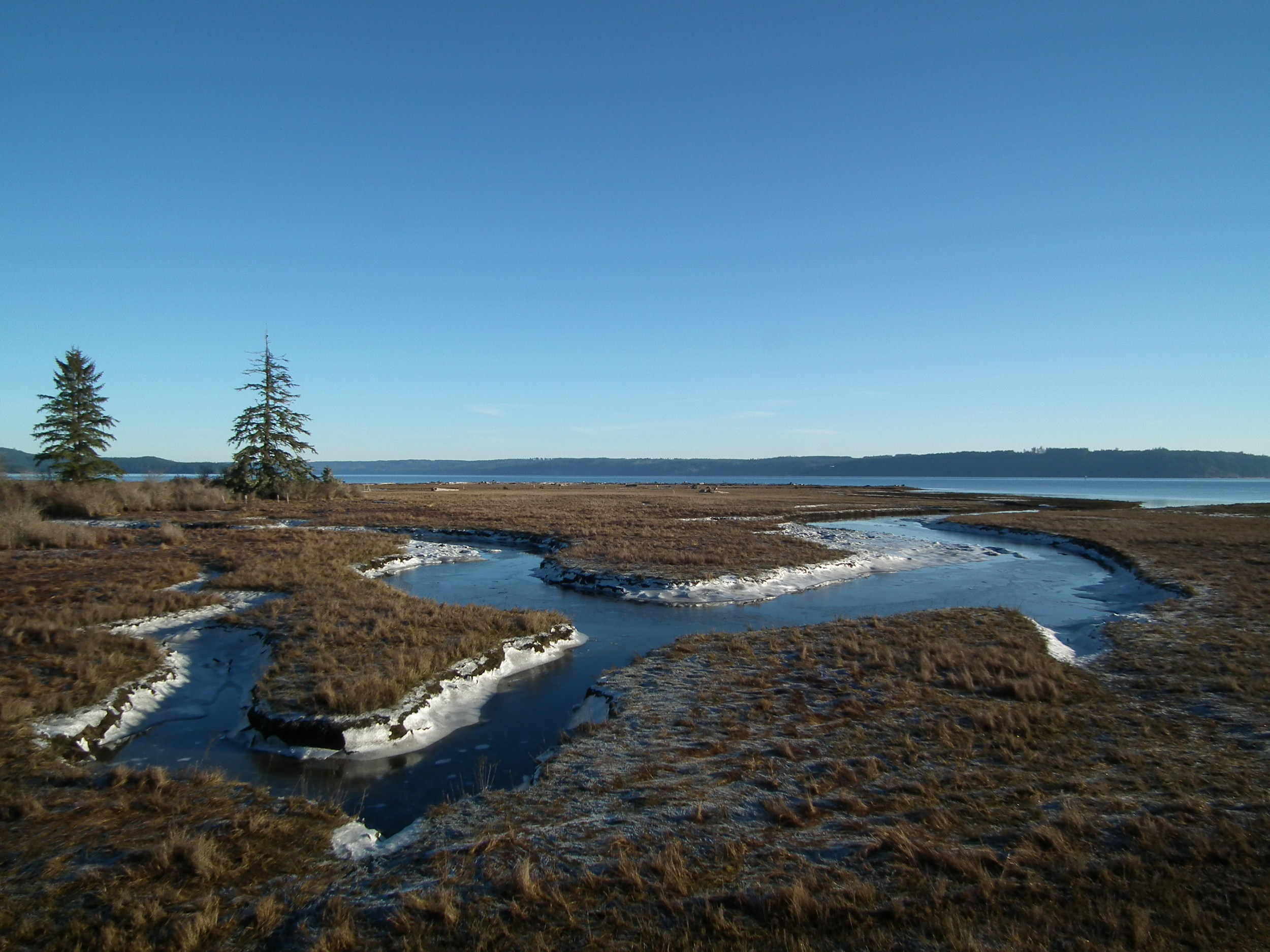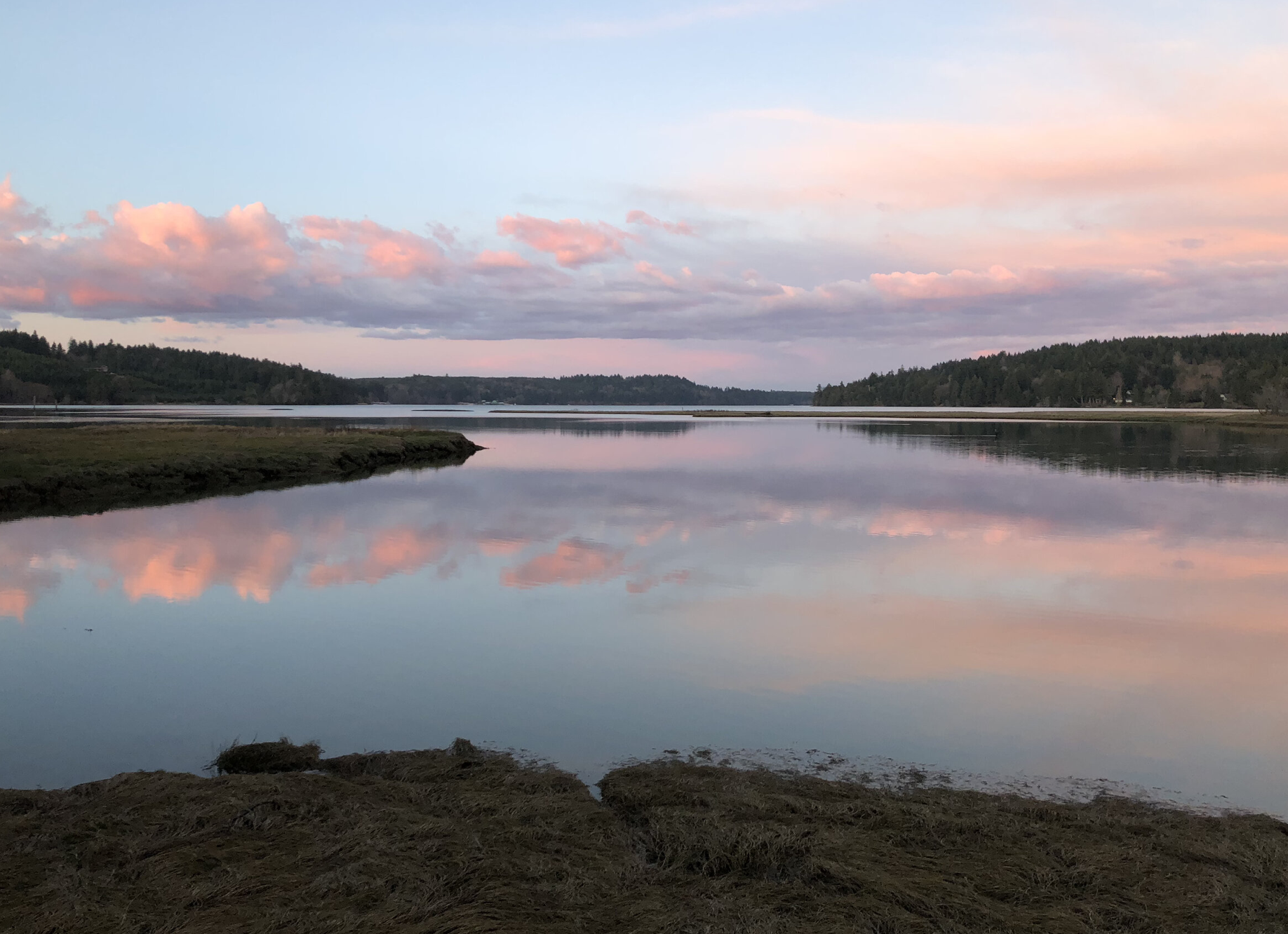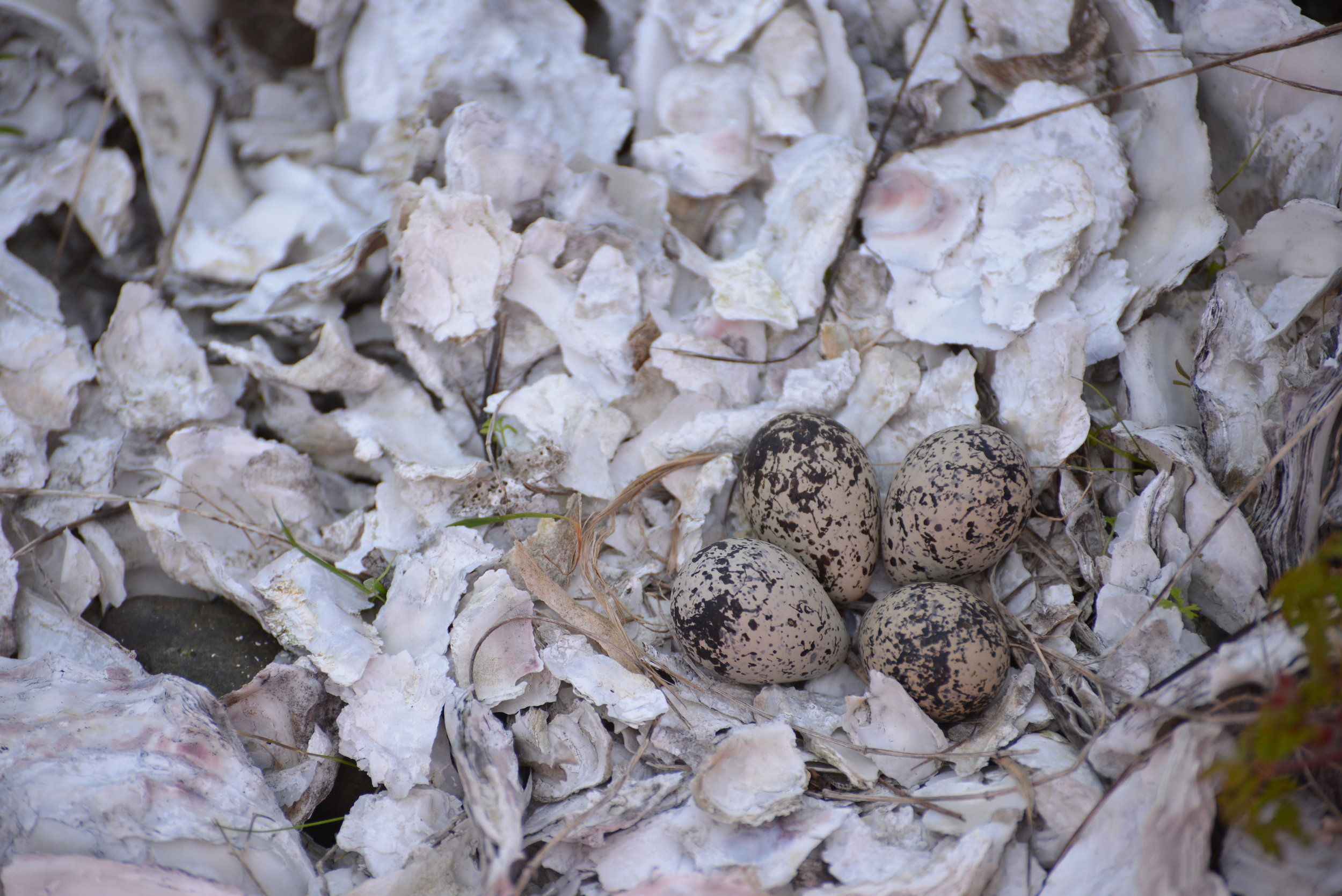
Mountain Biking Lower South Fork Skokomish
The fall colors on Hood Canal are heralding the close of summer. Time to head to the hills to embrace the much needed rains in the Olympic National Park as the hills and valleys go back to the Technicolor spectrum of green.
Whenever the impending rains approach Olympic National Park, they turn our hills and valleys back into the spectrum of green that makes home feel like home.
Photo Credit: Bike List
For some of us, that means misty morning walks up our favorite mountains (like Mt. Ellinor), for others, that means relaxing indoors with a good book, but for those of us that feel best while we are two-wheeling, that means tacky dirt and flowy mountain biking trails!
Grab your elbow pads and helmets, and tune up your metal steeds as we embark on our newest in the Hood Canal Travel guide.
Fuel Your Fire | 9AM
Serious riders (or pure-and-simple fun-seekers like us) need a belly full of goodness to fuel a full day of thrill-seeking. If you’re an early bird and a breakfast fiend, stop into Blondie’s for down home from-scratch diner food. The biscuits and gravy take the cake at this friendly local joint.
Hit the trail | 11AM
After meandering down some forest roads underneath the towering Olympics, come to the Lower South Fork Skokomish River Trail #873. Characterized by its intermediate single track riding through some of the finest ancient forests in the Northwest, this ride serves up a bit of everything. Doable as a 20.9 mile loop, if you care to climb the road and ride trail down although most prefer to ride single track up the trail and then back down.
Olympic elk still roam the hillsides, and as you are slashing short, quick ascents and sending sometimes rocky and rooted descents, take in the uncontested beauty of the river valley sliced by the surging Skokomish River.
"I love this fun, flowy cross-country trail that parallels the South Fork of the Skokomish River. It has a bit of everything!" - Jaime, local bike shredder
Before embarking, be sure to check trail conditions here, and prepare to be without cell service by having a good map and a USFS Rec Guide. Keep in mind that, like most USFS land, a Recreation Pass is required, which you can find here, or at a number of local businesses like Verle’s Sports Center and Marine in Shelton.
Treat yourself to a view | 2pm
Before that plastered grin that characterizes a good ride fades away, get yourself to one of the most recognized historical relics of Hood Canal. From the trailhead, a short 20 minute drive takes you to the High Steel Bridge. The highest railway arch ever built in the United States spans the South Fork of the Skokomish (a river that you are already quite familiar with) a dizzying 365 feet above the forest floor. Originally constructed in 1929 by the Simpson Logging Company, the bridge was converted to road use in 1950.
As you flip through the memories of a day well spent, remember that we love keeping up with you! Tag your photos and thoughts on social media with #explorehoodcanal #wildsideWA #hoodcanal. Be sure to check in with us on Facebook, Twitter, Instagram, and Pinterest for more ideas on how to get the most out of your road trip to Hood Canal. Happy trails.
Daily: 5am-9pm
360.432.2777
Lower South Fork Skokomish River Trail #873
Tunnel Creek Trail Hike
Olympic National Forest’s Tunnel Creek Trail lies just a few miles south of the popular Big Quilcene Trail. But unlike the Big Quil which leads to Marmot Pass, a high windswept wildflower-rich gap providing sweeping views—the Tunnel Creek trail travels mainly beneath a thick canopy of primeval forest.
Craig Romano | author
Olympic National Forest’s Tunnel Creek Trail lies just a few miles south of the popular Big Quilcene Trail. But unlike the Big Quil which leads to Marmot Pass, a high windswept wildflower-rich gap providing sweeping views—the Tunnel Creek trail travels mainly beneath a thick canopy of primeval forest. Lacking the wow factor of Marmot Pass, Tunnel Creek gets passed over by many a hiker. However, those who take to this trail less taken soon discover; Tunnel Creek offers plenty of delightful spots and some pretty decent views as well. And all without the crowds of Marmot Pass.
Hit the Trail
The Tunnel Creek Trail immediately enters the 44,258-acre Buckhorn Wilderness, the largest roadless area in Olympic National Forest. Much of the wilderness lies within the Olympic rain shadow encompassing some of the driest mountainous terrain in the Olympics. But here at the wilderness’s southern reaches, precipitation increases. And it’s noticeable immediately upon starting up the trail. The surroundings are verdant—draped in mosses and lichens. The trees are grand. And the valley is alive with the sound of cascading water.
Work your way up a tight valley following alongside tumbling South Fork Tunnel Creek through a tunnel of towering old-growth western hemlocks and Douglas-fir. The hike is magical, almost ethereal on a misty morning. And it’s welcoming on a sweltering summer day, as the ancient trees do an excellent job of regulating the temperature, providing some much appreciated air-conditioning.
After 3.3 miles and gaining a modest 1500 feet of elevation, reach the still intact Tunnel Creek Shelter. A remnant from when this trail was much longer (before logging and roads obliterated much of it). In the early days of Olympic National Forest and Olympic National Park there were more than 90 trailside shelters in the Olympics. Many were developed through the guidance of Frederick William Cleator, who became one of the nascent US Forest Service’s first recreational specialists. Along with calling for trails, shelters, and fire lookouts, Cleator also advocated for a large portion of the Olympics to be left as wilderness, free from any developments.
The early shelters were meant to help administer the forest by providing rangers, trail workers and foresters a place to overnight while traversing the vast wild lands of the Olympics. But they were also welcomed by the few backpackers who plodded into the Olympic backcountry at the time. Through the years many of the shelters succumbed to fire, collapse and disrepair. And as recreational use increased and attitudes changed regarding land management, many hikers and land managers began to question the role of these structures in the wilderness. Under new directives many of the shelters were allowed to fall in disuse or were intentionally dismantled.
Many recreationists however continued to argue for the need of these shelters to provide emergency cover for backcountry users caught in severe weather. Many other recreationists including this author have argued to maintain the remaining shelters now numbering only around 20 as historically significant and preserve them as historic structures.
The Tunnel Creek Shelter is one of the last remaining in Olympic National Forest. Perhaps use it for a lunch break. Reflect on its long history and the role it has played providing refuge to many a wanderer on a cold and wet day. And help protect it from misuse. Beyond the shelter, the trail crosses via a log bridge the South Fork of Tunnel Creek and then gets down to business. They way now steadily and steeply climbs out of the valley ascending a thickly forested ridge. Eventually reach a small saddle in the ridge harboring two small bodies of water. The first is a small grassy pond known as Karnes Lake. Just beyond and a little higher up at 4.3 miles from the trailhead and at an elevation of 4300 feet is the more appealing Harrison Lake.
You don’t want to call it quits yet however. Conjure up a little more energy and continue hiking, ascending through open forest and over ledge coming to the 5050-foot ridge crest at 4.7 miles. Now take in an exceptional view of 7,743-foot (third highest peak in the Olympics) Mount Constance’s impressive sheer vertical east face.
You can scramble along the rocky ridge a little higher to better appreciate Constance’s towering presence, less than two miles away to the northwest.
For most hikers this is the turning around spot. But the trail continues from here making an insanely steep drop of more than 4300 feet in 3.6 miles to the Dosewallips River Road. It’s brushy in spots and easy to lose along the ridge. Otherwise it’s in decent shape down steep slopes and through old growth and past a small waterfall at Gamm Creek.
f you can arrange a car shuttle consider hiking out this route. There are some good views down to the Dosewallips River valley and out to Hood Canal during the initial descent if you want to just wander a little way down the trail. Otherwise start heading back to the cool forests of South Fork Tunnel Creek on the much more agreeable trail back to your start.
The details
Land Agency Contact: Olympic National Forest, Hood Canal Ranger District, Quilcene, (360) 765-2200,fs.usda.gov/olympic
Recommended Guidebook: Day Hiking Olympic Peninsula 2nd edition (Romano, Mountaineers Books)
Trailhead directions: From Shelton follow US 101 north for 50.5 miles. (From Quilcene, drive US 101 south for 1.5 miles). Turn left (west) onto Penny Creek Rd. After 1.5 miles bear left onto Big Quilcene River Rd (Forest Rd 27); which eventually becomes paved. At 3.0 miles bear left onto graveled FR 2740 and follow for 6.9 miles
Hamma Hamma's Living Legacy Trail
Take a leisurely hike back into time on this delightful trail along the Hamma Hamma River to the historic Hamma Hamma Cabin.
By Craig Romano, feature columnist
Craig Romano, is an author of more than twenty hiking guidebooks including the bestselling Day Hiking Olympic Peninsula 2nd Edition (Mountaineers Books), which includes detailed descriptions for 136 hikes throughout the Olympic Peninsula. Visit CraigRomano.com for more information.
Take a leisurely hike back into time on this delightful trail along the Hamma Hamma River to the historic Hamma Hamma Cabin. Constructed by the Depression-era Civilian Conservation Corp (CCC), the cabin was used as a guard station in Olympic National Forest. Today it stands as a testament to the craftsmanship and hard work of the CCC. Learn more about “Roosevelt’s Tree Army” and their legacy on this family friendly interpretive trail.
Photo: Craig Romano
In April of 1933 in the midst of the Great Depression, newly inaugurated president Franklin D Roosevelt established the CCC through an executive order. Roosevelt’s aim was more than just putting young men to work and allowing them to provide for their families.
"Roosevelt strongly believed in the spiritual and physical values of working in nature, and in the importance of conservation of our natural resources for the nation’s health and prosperity."
At its height in 1935, more than 500,000 young men were stationed in more than 2900 CCC camps in every state as well as Puerto Rico and the Virgin Islands. At the program’s close in 1942, more than 3 million men (nearly 5% of the country’s male population) had served in the CCC. This trail sheds some light on what life was like for these men during their time in the Corp—and highlight some of their achievements and legacy.
Photo: Craig Romano
Among their many projects, CCC recruits were responsible for building vast amounts of infrastructure within parks and forests throughout the country—including both the Olympic National Park and Forest.
They also fought fires, reforested large tracts of land and worked on flood control projects. There were camps established right within Olympic National Park and Olympic National Forest, including one in the nearby Staircase Region. Nearby Twanoh State Park on Hood Canal also was the site of a large CCC camp.
Hit the Trail
Start your hike east on a wide and level path through a riparian forest of large mossy maples and speckled barked alders. The first quarter mile of this recently refurbished trail is ADA compliant. While this trail emphasizes the historic role the CCC played in this corner of Olympic National Forest, there is plenty of natural beauty to be enjoyed long the way as well. It is the only trail (albeit just for a short stretch) that runs along the Hamma Hamma River.
Photo: Craig Romano
The river’s name come from the Twana (whose ancestral lands included much of the Hood Canal region) word Hab’hab, which refers to a reed along the river’s banks. The name means big stink, or literally stinky, stinky in reference to the aroma the reeds emitted. The trail hugs a bank above the river allowing for some excellent views of the pretty waterway.
Photo: Craig Romano
Stop and look for dippers—robin sized birds that feed on aquatic insects and nest along the shorelines of rushing water. In spring look for Harlequin ducks returning from the Salish Sea. One of the prettiest sea ducks, they build hidden nests along rapid moving creeks and rivers.
The trail climbs a small bluff granting an excellent view of the pretty waterway, before leaving the river for forest. At 0.5 mile the trail turns north to cross Forest Road 25. Now walk along cascading Watson Creek climbing about 100 feet to a wooden bench on a perch overlooking the creek. It’s a great spot to sit and enjoy the sound of nature’s water music. By late spring nesting thrushes and other songbirds add a wide range of melodies.
The trail now turns west to soon reach the historic Hamma Hamma Guard Station. Built by the CCC from 1936 to 1937, it was used for administrative purposes for forest fire and trail crews. Today this eloquently rustic structure with its hexagonal bay window can be rented out for an overnight stay recreation.gov. Please respect the privacy of any guests staying at the cabin by not walking on the grounds. Otherwise wander around the structure. Note the landscaping too, especially the rhododendrons which will be in bloom come May.
Photo: Craig Romano
After admiring the historic structure continue west on the loop crossing a small creek and traversing a grove of mature second growth firs. The way then descends into a ravine before re-crossing FR 25. Continue hiking passing some big beautiful old trees before reaching the campground loop road near campsite no. 6. Now turn right and walk the loop road a short distance back to your start closing your loop hike at 1.8 miles. Reflect on some of the achievements of the Corp including the thousands of miles of trails they built, more than 3400 fire towers constructed, nearly 3 billion trees planted, and the development of amenities and infrastructure in more than 800 parks across the nation. Many of their works are still standing and in use in Olympic National Park and Olympic National Forest as well as at several nearby state parks. The Corp’s legacy continues to live on for the next generation of outdoorsmen and women.
Getting Here
First .25 mile ADA; Leave No Trace Principles
Land Agency Contact: Olympic National Forest, Hood Canal Ranger District, www.fs.usda.gov/olympic
Recommended Map: Green Trails Olympic Mountains East 168S
Trailhead directions: From Hoodsport travel north on US 101 north for 13.7 miles turning left at milepost 318 turn onto FR 25 (Hamma Hamma River Road). Then continue west for 6.0 miles turning left into the Hamma Hamma Campground. Proceed for 0.1 mile to trailhead located near site no. 12.
Trailhead facilities: campsites (fee), privy
April Showers Bring Spring Flowers
Although the Pacific Northwest is known for its temperate rainforests accompanied by an abundant amount of green, with April warmth, we can start to look forward to the colorful relief offered by the return of the native flowers around the Canal and South Puget Sound area.
Although the Pacific Northwest is known for its temperate rainforests accompanied by an abundant amount of green, with spring’s warmth, we can start to look forward to the colorful relief offered by the return of the native flowers around the Canal and South Puget Sound area..
April to June is the best time of year for finding the delicate jewel tones out here on the wet coast. Whilst domesticated daffodils and tulips will always be celebrated markers of Spring, our native plants are often forgotten gems of the forests understory. As the days get longer and the weather gets warmer, take a ramble down one of Mason County’s forested walks, like Twanoh State Park Trail or for a more adventurous alpine hike, with spectacular views and unique flora, try Mount Ellinor Trail.
Keep your eyes peeled for the first nodding, purple blossoms of Henderson's Shooting Star (Dodecatheon hendersonii) and the showy, pinky-purple blooms of our local variety of Rhododendron (Rhododendron macrophyllum).
The Pacific Rhododendron is Washington’s State flower and is found in drier parts of the Hood Canal in the understory of coniferous forests.
There are nearly 30 varieties of Rhododendrons native to North America. The Pacific Rhododendron is Washington’s State flower and is found in drier parts of the Hood Canal in the understory of coniferous forests. Pacific Rhododendron can also be seen in partly sunny, open areas, such as along roads. The Pacific Rhododendrons and also Goat's Beard (Aruncus dioicus) can be found in proliference along the winding, scenic 101 Highway following Hood Canal. For an especially spectactular showing of the native rhodendrons, head up to the scenic outlook on Mount Walker.
Pink Fawn Lily
In sunnier, damper areas, near streams, look for the bright pink flowers of Pink Fawn Lily (Erythronium revolutum) or the iconic, if not slightly smelly, “West Coast Daffodil”— Skunk Cabbage (Fritillaria lanceolata). Also in sightly shady, waterside spots, look for carpets of pink Bleeding Heart (Dicentra formosa)— a more delicate version of our domestic variety. Try the Kamilche Kennedy Creek Trail for these humid loving flowers.
Orange Honeysuckle
As the weather gets warmer (from May to June) search in the partly shady area of the woods for the trailing tender beauty of Orange Honeysuckle (Lonicera ciliosa), and the yellow blossoms of Tall Oregon Grape (Mahonia aquifolium). The delicate, orange-red blooms of Red Columbine (Aquilegia formosa) also emerge during this time.
Camas was actively cultivated and traded between first peoples throughout the Northwest who would harvest the bulbs in the early spring and roast them in pit cooks.
Other blossoms to look for in the late spring are the azure, crocus-like flowers of the Common Camas (Camassia quamash). Found in full sunlight in open places, such as fields, parklands, the bulbs from the Camas were an important part of the diet of Native Americans. Known as k’a’w˜up to the Skokomish and sxa’dzaêb by the Squaxin, this bulbous flower was actively cultivated and traded between Nations throughout the Pacific Northwest who would harvest the bulbs in the early spring and roast them in pit cooks.
On one of those calm days when you believe it might just be summer here early, pack a lunch and hop in the boat and travel to Hope Island Marine State Park. Here you will be greeted by lovely trails and beautiful naturalized gardens with a mix of introduced and native species.
Red Paintbrush
Once settled as a farm, Hope Island has historic fruit trees mixed in with native camas, honeysuckle and the elegant red, trunks of Madrone (Arbutus menziesii). An unusual looking plant found along sun-facing, beach banks is the Red Paintbrush (Castilleja miniata), whose tiny green flowers are hidden in bright red leaves that give the appearance of a brush dipped in red paint. Since most of these species are protected against picking or transplanting, remember to keep your enjoyment to viewing.
You can take as many photographs as you like, but refrain from taking bouquets and let the native flowers thrive.
If casual enjoyment of our native plants is what your after, the Washington Native Plant Society has plant identification resources online and there are plenty of guide books to help. Pojar and Mackinnon’s Plants of the Pacific Northwest Coast (2014) and Nancy J. Turner’s Food Plants of Coastal First Peoples (1995) offer excellent information, photographs and tidbits that add color to an already polychromatic subject. Happy hunting!
Hood Canal Travel Guide: Waterfall Wonders
Waterfall Road Trip
Cascading waterfalls tucked into hidden nooks are simply and quintessentially Hood Canal. Sure, we love summer, but winter is truly a marvel in our corner of the world. We daresay we prefer it when it comes to admiring the majestic cascades tumbling from the woods.
Waterfall Wonders Near Shelton, Washington
It’s undeniable that cascading waterfalls tucked into hidden nooks are simply and quintessentially Hood Canal. Winter and early spring are optimal for peeping these rushing beauties.
As the rain falls, it keeps our hillsides the vibrant green that makes the Olympic Peninsula feel like home. This also means the waters rise, and the cascades fill in. So check the forecast, grab your best adventure buddies, and get to some of the most beautiful gems that Hood Canal has to offer.
Visit the Olympic waterfall trail and see our detailed notes on each destination below. This trip is ideal for Seattle weekend road trippers taking advantage of the Kingston Ferry, looping up through Port Gamble, then down Hwy 101.
Take the plunge | 10am
Situated just north of Brinnon, Rocky Brook Falls remains one of the best easy-to-reach waterfalls on the Olympic Peninsula. After a 1986 micro hydro project was installed at the top of the falls, locals feared that the falls would run dry. Thanks to operators of the facility, the beautiful 229’ tall falls run year-round.
For the waterfall nerds out there, Rocky Brook’s primary form is in tiered horsetails, with three thundering drops until it reaches the small pool below.
Upon arriving at Rocky Creek, park just beyond the small bridge and follow the trail that leads past the hydro facility for about 500 feet. Note that the rocks around the pool can be slick, especially when wet, so it’s best to exercise caution.
Test your navigation skills | 1pm
Little is written about these falls, and visiting them requires a fair bit of exploring. Over the years, a number of the most intrepid kayakers have ventured to the Olympic Peninsula in order to run Hamma Hamma Falls. The boiling pool at the bottom of its pristine and highly technical 25’ first drop gives paddlers just enough time to set up for the 50’ drop immediately after.We would reccomend enjoying it from the top instead.
A concrete bridge spans the river over the falls at the fall line of the upper drop, but an adventure-seeker will need to navigate the lower banks to get a full-frontal view of this beauty.
Re-orientate your GPS | 2pm
Just three miles downstream, Lower Hamma Hamma Falls is the slightly-less-majestic sister to the beaut upstream. Dropping into a small gorge, the falls tumble over a large pile of boulders. As such, it’s difficult to see the whole falls from any one location and it is advised to exercise extreme caution when trying to gain a better downstream view.
Get a great view at High Steel Bridge | 4pm
No waterfall itinerary would be complete without a trip to the historic High Steel Bridge that spans the gorge and sits a staggering 300’ above the mighty South Fork of the Skokomish River.
The vertigo-inducing High Steel Bridge has an uncontested view of the last cascade on the itinerary, Vincent Creek Falls, and is easily accessed from Hwy 101. It’s also a quick pit stop after an awesome wintery afternoon of mountain biking if you happen to visit the area on a dry-ish day.
Wash it down in Union, Washington | 6pm
Here’s the ultimate challenge of your day: organize it so that the end of your satisfyingly adventurous day brings you straight to a good cocktail at the newly renovated Alderbrook Resort and Spa.
As you sort through the memories of a day well spent, remember that we love keeping up with you! Tag your photos and thoughts on social media with #explorehoodcanal, #wildsideWA, or #hoodcanal for a chance to be featured by us.
Be sure to check in with us on Facebook, Twitter, or Instagram for more ideas on how to get the most out of your road trip to Hood Canal. Happy adventuring!
For more fantastic waterfalls in the area, check out this waterfall trail throughout the Olympic Peninsula. This guide is curated by author, Craig Romano, and hosted by Explore Hood Canal.
Wagonwheel Lake Hike features alpine views and solitude
One of the steepest trails in the Olympic Range, perhaps it's called "wagonwheel" because, as author, Craig Romano, puts it, "you’ll bust your axle" hiking this unforgiving climb if you are unprepared. Are you up for the challenge?
By Craig Romano
Craig Romano, is an author of more than twenty hiking guidebooks along with Day Hiking Olympic Peninsula 2nd Edition (Mountaineers Books), including 136 hikes on the Olympic Peninsula. craigromano.com
Utilizing tight switchbacks and no switchbacks at all, the Wagonwheel trail makes a grueling ascent up steep forested slopes. It’s a workout. There are some good, albeit limited views along the way. But you’ll probably feel short changed for the effort. In that case, summon your second wind and continue hiking heading up even steeper terrain to emerge at an unassuming peak granting sweeping views of craggy peaks, deep valleys, and some of the wildest and rugged terrain in the state.
"Old-growth forest, solitude, and alpine views await after a grueling ascent."
Hit the Trail
Sharing its start with the Staircase Rapids Loop and North Fork Skokomish River, don’t fret if the parking lot is packed. Almost all of those vehicles belong to hikers heading to those two other trails. Why not Wagonwheel Lake? Perhaps the sign at the trailhead does its job discouraging folks. It states that you’ll climb 3,200 feet in 2.9 miles followed by “Very Steep!” But even that assessment doesn’t correctly portray the magnitude of steepness of this trail.
The trail is gentle for a short stretch at the beginning and ending but still leaving nearly 2,800 feet of elevation gain within two miles. Yep—that’s very steep indeed!
Regardless of the fair warning, many hikers intent on reaching the lake ignore it or underestimate their fitness level and attempt this trail. And all too many of them poop out resigning themselves to accept that despite the trail’s short length—elevation gain can be a leveler! But for those of you who accept this hike as a challenge, take note.
The lake isn’t exactly one of the most stunning places in the Olympics. You may question if it was worth all of that sweat and toil. If your goal was a good workout in a natural environment—or perhaps a chance to commune deep in the woods all alone—then, yes it was worth it.
If it’s breathtaking views you are after, they are there, but you’re going to have to work a little bit more!
Beyond the forested basin cradling little Wagonwheel Lake you can follow a path another .4 mile and 700' of climbing to an open 4,755' knoll straddling the Mount Skokomish Wilderness-Olympic National Park Boundary.
From this spot framed with silver snags and clusters of firs you can enjoy excellent views of nearby Mount Lincoln, Mount Stone, Mount Skokomish, Mount Ellinor, Mount Washington; and the vast emerald ridges dividing the South and North Skokomish River valleys.
There are good views too across the North Fork Skokomish River Valley to Wonder Mountain, Five Ridge Peak, Six Ridge and other little known and little explored peaks. A region that pretty much looks as it did when Lieutenant Joseph P O’Neil explored this part of the Olympic interior more than 120 years ago.
Along the Way
Despite its grueling statistics, Wagonwheel Lake gets its fair share of visitors and attempted visitors. The trail starts in a lush understory of shoulder high ferns and salal.
The grade at first is deceptive, the going pretty easy. Keep a lookout to your right for an old mine shaft. Then prepare to do some serious climbing. The trail commences in a series of short tight switchbacks relentlessly ascending steep slopes.
Wind through mostly uniform seond-growth fir forest, a testament to a past disturbance—most likely a fire.
Among the monotonous make up of trees look for a few western white pines as well as Pacific rhododendrons. In late spring and early summer this flowering shrub, Washington’s state flower adds brilliant pinks and purples to the verdant surroundings. The monotony of the brutal climb however, is rarely broken.
At about 1.7 miles the trail comes to a small ledge. Here take a break and enjoy a window view of the valley below. Then commence climbing. The forest transitions from fir to hemlock. The trail and to your chagrin, steepens. Now foregoing switchbacks, the way takes an even more direct approach to subduing elevation. If you’ve hiked in the Adirondacks or White Mountains back east, the steepness of this trail compares to those areas where switchbacks are only spoken about as something that exists out west to make hiking easier.
After what feels like forever, the trail miraculously levels out. Now catch your breath, wipe your brow, swig some water and enjoy easier walking through old-growth fir and hemlock. The trail next traverses a steep slope breaking out onto a brushy avalanche chute. Work your way across slumping tread enjoying views to the northwest of Mount Lincoln and the serrated Sawtooth Range.
The trail then re-enters cool evergreen forest and crosses Wagonwheel Lake’s outlet creek. Just a hop, skip, and jump away lies the little lake in forested bowl. A small bench above the lake makes for a good place to collapse. But if you have any oomph left, locate a primitive path taking off from the main trail at the lake. It goes for a half mile straight up the 4,755-foot knoll to the north. The officially unnamed peak straddles the Olympic National Park and Mount Skokomish Wilderness in Olympic National Forest. From this peak’s meadows punctuated with silver snags enjoy a breathtaking panorama that includes the following prominent peaks: Pershing, Washington, Ellinor, Copper, Lincoln, Skokomish, Wonder, and the Brothers. Little Wagonwheel Lake sparkles below. Rest up and prepare your knees for the brutal descent.
For more trails and information check out Explore Hood Canal’s list of area hikes or visit the Explore Hood Canal Hiking Map.
Hood Canal Travel Guide: Birdwatching
With its wealth of shoreline, fresh and saltwater marshes, mudflats, and bountiful forests, the Olympic Peninsula is a birders’ paradise.
A canalside Birding Itinerary
With its wealth of shoreline, fresh- and saltwater marshes, mudflats, and of course the bountiful forest, the Olympic Peninsula is a birders’ paradise. And whereas winter and spring aren’t the most popular seasons for human tourists (meaning less competition for lodging and dining), they happen to be the best for catching the avian crowds.
From soaring birds of prey to elusive divers, birdwatching is one more reason to get to Hood Canal when there aren't hordes of RVs cruising down HWY 101.
If you are looking for ll the gritty details on Olympic Peninsula birding locations, check out Craig Romano’s list of the Top 25.
Whether it satisfies your ornithological cravings for the season or simply whets your appetite for much more, gear up (our suggestions are below) and follow along!
Theler Wetlands | 7am
If you only make one dedicated birding stop in the Hood Canal, Theler Wetlands, with its easily navigated trails, interpretive kiosks, and educational exhibits, should be it. More than two miles of interpretive walking trails through 39 acres of protected wetlands provide an excellent introduction to birdlife in the Hood Canal. Newbies and experienced birders alike will delight in views of bald eagles, green-winged teals, horned grebes, and more. You may even be able to spot otters in the freshwater marsh!
Photo courtesy of Clint Ferarra
Sunset Beach Deli | 10am
Whether you worked up an appetite for lunch or just need a quick coffee to fuel the next birding venture, the Sunset Beach Deli is a local favorite for gyros and Philly-style cheesesteaks. In the mornings, it’s also the go-to location for filling breakfast burritos. If you’re not quite ready to eat, have them wrap up a sandwich and take it to go.
Twanoh State Park | 1pm
Twanoh State Park is a favorite in the summer for swimming and watersports, but the quieter winter and spring months make it a great place for viewing wildlife and birds. Bring your binoculars to the shoreline for an eyeful of diving birds such as loons, mergansers, murrelets, and ruddy ducks with their distinctive upright tails. In the towering cedars and maples inland, listen for brown creepers and red crossbills.
Bonus: Between Twanoh and Potlatch, Highway 106 takes you right by the Skokomish River Delta. The overlook pull-off is a good spot to scope gulls, grebes, and goldeneyes.
Photo courtesy of Clint Ferarra
Potlatch State Park | 4pm
Like Twanoh, Potlatch bustles with humans in the summer and birds in the winter and spring. With 5,700 feet of saltwater shoreline, it’s a great place for viewing waterfowl, particularly during high tide. In the water, look for heron, scoters and scaups, and check the trees for fox sparrows and Steller’s jays.
Dinner at 2 Margaritas | 6pm
Nothing works up an appetite quite like a day spent in the bracing sea air. Whether you’re celebrating new additions to your Life List or toasting to better luck next time, we recommend a margarita (or two) at the warm, colorful 2 Margaritas restaurant in Union. Generous portions in a cozy atmosphere make it the perfect cap to another beautiful day in the Hood Canal.
Need More inspiration?
Renowned guidebook writer and trail advocate, Craig Romano, shared 25 of his favorite bird viewing destinations with us. Start planning your trip now!
Hood Canal Travel Guide: Hike + Campfire
Itinerary #8: Spring Adventuring
There is a host of romantic notions about staying inside all winter, putting on fuzzy socks against the cold, and hibernating beneath a blanket. Instead of letting a little rain stop us from getting after it, we choose adventures that are even better with a little atmosphere!
There is a host of romantic notions about staying inside all winter, putting on fuzzy socks against the cold, and hibernating beneath a blanket. For some, rain grants permission for hours-long Netflix binges. But that’s not what we’re known for in the Pacific Northwest. Instead of letting a little rain stop us from getting after it, we choose adventures that are even better with a little atmosphere!
Now that the fear of forest fire has lessened, taking a break midway for a festive campfire makes any hike extra memorable. Enjoy having a popular trail all to yourself, and treat yourself for a job well done with dinner in town and a cozy cabin stay.
Lena Lake | 12pm
Lena Lake is a large gem nestled in the hills of the Olympic National Forest. This area was closed for much of the August because of an area forest fire. A wide and relatively accessible trail makes the journey to the lakeshore a family-friendly, but satisfyingly challenging day trip. From Highway 101, turn onto North Hamma Hamma Road/Forest Service Road 25 at milepost #318. Follow it for 7.5 miles to the trailhead, which offers plenty of parking alongside the road.
The 3.5 mile trail to the lake parallels and then crosses Lena Creek. Especially during the rainy season, the trail can be wet and slippery, so be sure you’re packing waterproof boots and other winter hiking essentials.
At the fork in the trail approximately three miles in, the trail to the right will take you directly to the lakeshore. If you’d prefer a brief scenic detour, a quarter-mile jaunt along the left path will provide you with an overlook that’s perfect for photo-ops or simply soaking in the view.
Campfire | 3pm
Nothing makes a hiking outing extra special like a crackling campfire to warm the hands and maybe even roast up a snack. With a set of homemade fire-starters, even damp wood won’t ruin your fun. Making them couldn’t be easier, either. Before you leave home, throw a dozen 100% cotton balls into a sealable plastic bag with a blob of Vaseline pure petroleum jelly. With the bag sealed, knead the Vaseline into the balls. When you’re ready to start your fire, pull one of the balls apart a bit to expose the dry fibers, apply a flame or spark, and you’re on your way.
The code of the wilderness is to Leave No Trace, so keep your fire small and practice good fire safety in addition to packing out all of your trash. Fire danger is generally very low in the Olympic Peninsula during winter and spring, but double-check that no burn bans are in effect.
Once you’re sufficiently warmed and pleasantly smoke-scented, pack up and retrace your steps to the trailhead.
Wash it down | 5pm
Even if you enjoyed a snack with your campfire, the hike back to your car and drive into civilization will have you craving a hearty meal. Hoodsport is the closest town, and offers a range of tempting options. Whether you choose fried chicken at Model T Pub & Eatery, fish and chips at Eagle Creek Saloon, or fajitas at El Puerto de Angeles, you won’t be disappointed.
If you’re heading farther south, Union offers a few more options. We’ve said it before, but it’s hard to beat Robin Hood Village Resort for a satisfying dinner in a cozy, intimate setting. It’s the perfect transition from wooded wonderland to creature comforts. And speaking of creature comforts…
Soak the day away | 8pm
A campfire is a great way to warm the hands, but to really warm up after a wintery hiking adventure, nothing tops a hot tub. Ten of the cottages at Robin Hood Village Resort have their own private hot tubs. Whether you hiked all six miles of the Lena Lake loop, did an even more extensive adventure, or simply strolled around downtown, you deserve to treat yourself. Reserve your cottage now—or explore other great local lodging options.
What’s your most memorable hiking or campfire experience? We’d love to hear about it—and see pictures! Reach us on Facebook, Twitter, Instagram, and Pinterest.
Hood Canal Travel Guide: Outdoor Yoga
Picture this: the full moon slowly rises over the placid Hood Canal, illuminating the rugged Olympic Mountains as you slowly exhale and relax into your tree pose.
Outdoor Yoga Near Lake Cushman
Picture this: the full moon slowly rises over the placid Hood Canal, illuminating the rugged Olympic Mountains as you slowly exhale and relax into your dancer's pose.
Outdoor yoga is something we can get excited about. Leaving all the electronics in the dust and taking our poses into new terrain is a welcome challenge and highly recommended for anyone who owns a mat (or doesn’t yet!).
Although there are a number of yoga classes offered in Hood Canal, we find that it’s just as exciting to find a serene spot in the woods or on the shore. The rich, misty woods smell amazing when you slow down enough to appreciate them, as does the salty, bracing shoreline. Read on for tips and tricks for taking your practice to the next level.
Have a Game Plan
At the risk of sounding counterintuitive to the free-flowing nature of outdoor yoga, it’s important to hone a few of your favorite poses under the guidance of a certified instructor. This can help reduce the risk of injury when you’re on your own.
There are several yoga classes offered in Hood Canal, and our favorites are at Joonbug Yoga in Shelton and Alderbrook Resort & Spa in Union. Joonbug Yoga offers a number of weekly classes, which Alderbrook supplements with weekly and monthly classes. We recommend planning a trip to coincide with both!
Every Tuesday in November and December, a certified yoga instructor from Joonbug Yoga guides a stretching and exercise-focused practice in the heated indoor saltwater pool at Alderbrook. It’s free for resort guests, but there is a fee for non-resort guests. As if you needed another reason to swing by Alderbrook!
Image courtesy of Alderbrook Resort & Spa
Take Om Into Your Own Hands in Union, Washington
There’s an amazingly satisfying and curiously primal aspect to practicing yoga on your own, outside a studio. Break loose from the structure of a guided practice, step onto uneven ground, grab a beach towel and enjoy!
Just as a traditional mat doesn’t translate too well outside of the studio, neither does music. Unplug: leave the noisemakers in the car and embrace the nature-sounds. Though it might be a bit harder to concentrate with the unpredictable bustle of the woods or the shore, welcome the challenge and adapt accordingly.
Focus on balancing poses rather than down dog holds or vinyasa flows. The uneven ground can be hard on wrists, but an engaging challenge for the fast-twitch muscles in your legs.
Above all, be open-minded and allow yourself to explore your yoga practice in a new environment. Be sure to prepare well for a session outside with plenty of warm clothing if you choose to practice in colder temperatures, and sunscreen during the sunnier months.
We can’t wait to see what awesome poses you get into in our glorious backyard! Please share with us using #wildsideWA for a chance to be featured on our social media pages, and sign up for our newsletter to receive email exclusives and special lodging discounts.
Until then, catch you on Facebook, Twitter, Instagram, and Pinterest. Namaste!
5 Reasons Why Olympic National Park Should Top Your To-Do List
Even someone as determined as John Muir couldn’t have poked around every nook in the 876,447 acres of this boundless wilderness haven. Here are our 5 reasons why you can’t afford to miss it—especially if you’re a Seattleite.
This mystical winter wonderland, full of a wildly varied flora and fauna, occupies a behemoth slice of our favorite state. The Olympic National Park, with its 3,000 miles of twisting, cascading rivers and streams (some even frozen in the heart of winter), its 611 miles of switchbacking, lesser-trodden trails, and only 168 miles of road, may be more enchanting and alluring than any other place we know. Even someone as determined as John Muir couldn’t have poked around every nook in the 876,447 acres of this boundless wilderness haven. Here are our 5 reasons why you can’t afford to miss it—especially if you’re a Seattleite.
1. Meet the locals (The furry ones!)
Massive bugling elk roam the dense and snowy woods while mountain goats own the craggy peaks. Over 300 species of birds soar through the skies (Washington Audubon has sketched out the perfect birder’s road trip map), and the ancient salmon runs are completing their runs as the first snow falls. That’s not to mention the infamous and somewhat legendary giant Pacific octopi that inhabit the Hood Canal–yes you heard us right.
2. Climb Mt. Ellinor in the snow
Going for the summit of Mt. Ellinor in the snow is a staggeringly beautiful experience. Meandering through quiet old growth forests and alongside craggy peaks, this hike serves up some serious views. A strenuous 6.2 miles round trip earns access to some seriously picturesque views of Hood Canal and beyond (assuming you're lucky enough to catch it on a clear day). Doable for all those with proper gear and plenty of time, it’s a must-not-miss. And that’s only one tiny slice of the 3,000 miles of beautiful trail contained within the park.
3. Climb The Big Rock at Lake Cushman
Lake Cushman, just outside the Staircase entrance to the park is host to kokanee salmon and cutthroat trout fishing in the summertime, and stunning views in the wintertime. A slew of other cold-weather activities like kayaking (with ALL of the proper gear) with Blue Horizons Paddlesports or climbing up the famed Big Rock and swearing to yourself that you'll be back during the summertime to jump off.
4. Stop for a warm up at Alderbrook Resort in Union, Washington
With all of the boundless opportunities for adventure in the Olympic National Park, face it: you’re going to be pooped (and probably cold). Lucky for you, there are a myriad places to rest your weary explorer’s head. If you’re hankering for a sojourn in a relaxing spa and a hot beverage afterwards, then Alderbrook Resort & Spa is for you! Though, if you’re feeling a quaint VRBO-style rent-a-home on a back road in the woods is up your alley then we have just the place. Click here for an extensive list of options.
5. Geting to Hoodsport is so easy
Staircase, one of the grandest entrances to the southeastern corner of the park is situated just outside of Shelton, a 45 minute drive from Olympia and two hours from Seattle. Hood Canal’s Hoodsport is an ideal launching point for an adventure in the park by way of Staircase, and the intrepid adventurers can hit the Staircase Rapids or snowshoe along the river after the snow starts to fall. With Hoodsport Coffee to properly fuel a morning’s adventure and Hardware Distillery’s handcrafted libations to cheers after a successful day tromping around the forested nooks, it’s worth checking out.
We’re convinced: life is about creating yourself. We choose to do it in one of the most beautiful places on earth. Adventure is spilling out of every nook. Plan your trip to come visit Hood Canal and the Olympic National Park.
For more adventuresome inspiration and ideas, keep up with us on Facebook, Twitter, Pinterest and Instagram.
Landscape Photography with George Stenberg
Though there are many factors that come together to make a good photographer—gear, dedication, understanding of theory, etc.—the one elusive quality that boosts George Stenberg’s craft into the upper echelon is timing.
Though there are many factors that come together to make a good photographer—gear, dedication, understanding of theory, etc.—the one elusive quality that boosts George Stenberg’s craft into the upper echelon is timing. This is often translated to photographers terms as patience.
Although many assume that being in the right place at the right time is happenstance, one look at Stenberg’s extensive collection suggests there’s something more sophisticated at play. Time and time again, he publishes jaw-dropping creations that not only make us fall even more in love with our own DSLRs, but with Hood Canal that continually provides these glorious moments.
Note: all photos featured in this post belong to George Stenberg.
Meet George Stenberg
He’s the man behind the image that makes you say, “whoa.” And rightfully so—his mission is simply in the right place. “The world is a wonderful, amazingly beautiful place,” he says, “look around and see for yourself. Let’s cherish it and take good care of it for those who come after us."
We caught up with him for a little Q + A.
What makes shooting around Hood Canal and on the Olympic Peninsula special?
The simplest answer is because I love the Hood Canal and the Olympic Peninsula. I grew up in a small community along the Puget Sound called Dash Point. I always love to being by the water.
As a youngster, my folks would take us on weekend trips to my Grandparents' cabin at Maggie Lake, near Tahuya. We would also spend a lot time with friends who had a cabin nearby on Hood Canal. My earliest memories of the fjord are the warm waters, oysters, and a rocky beach. This was way different from our cold water and sandy beach in Dash Point.
Swimming in warm water was much nicer. Also, just about every summer we would take a trip around the Olympic Peninsula on beautiful Hwy 101. We called it a trip "around the loop." So I developed this love for Hood Canal and the Olympic Peninsula in my early years and as they say, "shoot what you love," applies to me.
What camera gear do you use to keep focused on what you do best as a photographer?
My equipment is very modest. I use an Olympus E-3 DSLR with two Zuiko lenses, 12-60 f2.8 and 40-150 f3.5. I shoot in RAW files and develop the images in Photomatix and/or Smart Photo Editor.
The Photomatix works well when I use HDR (High Dynamic Range) photography to help me capture the scene as I remember it. The Editor software is for basic editing and enhancing to suit the image and my taste.
Which photographers influence your work?
Port Angeles landscape photographer Pat O'Hara has been a big influence. I purchased his book Washington—Images of the Landscape almost thirty years ago, and I still refer to it and am inspired.
The late great Galen Rowell has been another huge influence. Mountain Light is a must read for any inspiring photographer. If only I could emulate his technical understanding of light and his passion for photography.
Also, Jim Brandenburg is an environmentalist and nature photographer and filmmaker based near Ely, Minnesota. Jim's work is nothing but spectacular in many ways. One of his books, White Wolf, is also a must read everyone who enjoys nature and particularly wolves.
Lastly, my Mom, Bonnie Stenberg, is another huge influence. I remember growing up with her taking pictures of us at all of our family events. Her photographs have accumulated in tons of scrapbooks and in frames filling the walls. She bought me my first camera when I went off to college. If only I had had the money for film and processing during those days.
Where is your favorite place to shoot around Hood Canal?
Every place on the Hood Canal is a favorite. It all depends the on time of year, the time of day, and many other factors. The view of the Olympics and the Big Bend is beautiful from the Union.
Lake Cushman, Skokomish Valley, and all the estuaries of the Skokomish, Hamma Hamma, Duckabush and Dosewallips Rivers are wonderful places to visit, explore, and take photos. I love to shoot from a special 3000' ridge top with a sweeping 360 degree view of the Cascades and Olympics. And there are many places that I have yet to find. But if I were to narrow my answer to one favorite place, it would be paddling in a kayak anywhere on Hood Canal on a warm summer evening.
Do you know someone who delights in shooting the under-trodden nooks of Hood Canal? Someone who sleeps with a tripod and welcomes the sunrise DSLR-in-hand? Is this person you? We’re on the hunt for those who love to shoot the Hood Canal. Get in touch with us, and you might be featured as next month’s Spotlight Photographer.
Until then, keep an eye out for photographic inspiration on Facebook, Twitter, Instagram, and Pinterest, and be sure to tag your creations with #wildsideWA so we can keep tabs on your travels about the Olympic Peninsula.
The Mountains are calling... ANSWER!
A weekend warrior is a 21st century beast whose population seems to be exponentially growing. As the “rolley chair blues” epidemic proliferates across the Pacific Northwest, so does the drive to combat it with an epic 48-hour adventure.
A weekend warrior is a 21st century beast whose population seems to be exponentially growing. As the “rolley chair blues” epidemic proliferates across the Pacific Northwest, so does the drive to combat it with an epic 48-hour adventure.
Here’s to those who burn the midnight oil finishing up reports and rise with the birds to knock presentations out of the park. This one’s for those who are at the gym until it closes so that their lungs are ready to be filled with alpine air come Saturday morning.
For those that simply cannot wait to escape Seattle’s concrete jungle when the clock hits 5 on a Friday, we have good news: Hood Canal is waiting for you in your backyard.
How to Get to Union, Washington
The Bremerton Ferry sets sail from Pioneer Square in the heart of Seattle over 15 times a day. As it scoots around Bainbridge Island, the impressive Olympic Mountains rise ever higher off of the water as your weekend playground draws ever nearer.
A short 45 minutes from the Bremerton Ferry Terminal lands you at Alderbrook Resort & Spa. But you’re a weekend warrior—you’ll take the extra half-hour trip to Lake Cushman. Or possibly even forge on a bit further in order to get in the thick of it with a visit to Staircase in Olympic National Park.
How to Make the Most of it
Breathe in, breathe out. You made it. Waking up underneath behemoth, moss-covered, primordial-looking trees and a tangle of lacy moss is what makes it all worthwhile. And you’ve got two whole diems to carpe!
Access to the Olympic National Park is second-to-none from Staircase Campground and it just so happens that some of our favorite biking trails are just down the road. The Lower South Fork Skokomish Trail #873 is bar-none one of the best trails around.
If a two-wheeled ride is not your pick of weekend poisons, Mt. Ellinor is a short drive away. An intrepid 6 miles of trail give way to breathtaking 360 degree summit views. And, as one of the more notable peaks in the area, bagging this peak will earn some serious bragging rights.
There is a wealth of adventure waiting around every twist of trail in Hood Canal. For more ideas, check out our extensive To-Do list.
How to Celebrate in Shelton, Washington
During a weekend away, we think just about anything is cheers-worthy. The good news? There’s no lack of handcrafted libations in Hood Canal. If you’re a gin or whiskey drinker, The Hardware Distillery crafts some of the best spirits in the Northwest. Their tasting room is open from 11am to 6pm Friday through Sunday.
If you find yourself drawn to a glass of wine made with locally sourced grapes as an after-adventure drink, Walter Dacon Wines in Shelton makes some of the best wine in the area and is dedicated to Rhone and Mediterranean styles. Their tasting room is open Wednesday through Sunday from noon until 6pm.
As weekend warriors ourselves, we revere those who rise early on Saturday and Sunday to take advantage of the precious weekend freedom. We’d love to see what you get into in our neck of the woods; tag your photos on social media with #wildsideWA, and be sure to find us on Facebook, Twitter, Instagram, and Pinterest for more.
Travel Guide: Road Trip Hood Canal
The roads are dry, gas is cheap, and it’s high time you and your crew kicked up some (proverbial) dust and planned a road trip.
It's finally starting to feel like Spring. Despite an over enthusiastic Father Winter bringing inclement and unusual weather to our neck of the woods, things are returning to normal. The roads are dry, gas is cheap, and it’s high time you and your crew kicked up some (proverbial) dust and planned a road trip.
In the spirit of warmer weather, juicy waterfall flows, and longer days, we’re serving up the perfect waterfall road trip itinerary. Enter your email address in the space above to get the full downloadable PDF (complete with a dope map by Outdoor Project) to throw in your glove box, grab some Swedish Fish, and go!
228 MILES. 9.25 DRIVING HOURS. 7 INCREDIBLE DESTINATIONS.
Hood Canal is just a quick hop from Seattle by way of the Bremerton Ferry. Once there, adventure is around every nook. From the best cliff jumping, to one of the least-traveled/most beautiful waterfalls in Olympic National Park, this three-day itinerary has something for everyone.
High Steel Bridge
The vertigo-inducing High Steel Bridge has an uncontested view of the last cascade on the itinerary, Vincent Creek Falls, and is easily accessed from Hwy 101. It’s also a quick pit stop after an awesome wintery afternoon of mountain biking if you happen to visit the area on a dry-ish day.
Paddle to Kokanee Falls
The paddle to the falls is easy and enjoyable year-round. And, the chances are good that you’ll have it all to yourself. The shoreline is thick with trees draped in old man’s beard (Usnea longissima), enhancing the already-mystical landscape and casting picturesque reflections.
Big Rock at Lake Cushman
Beset with the proud Olympics, this lakeside haven delivers the adventure goods for all explorers. This behemoth boulder settled on the side of the lake is one of the best-known cliff jumping spots in Washington, and it’s wonderfully accessible.
Hamma Hamma Falls
After navigating the rocky dirt road to the trailhead and a small side trail, a full-blown view of the falls appears through the foxglove and oxeye daisy in the spring and summer. Here the Hamma Hamma River careens over a primary 20-foot drop, then continues almost immediately over a 60-foot drop.
Rocky Brook Falls
Situated just north of Brinnon, Rocky Brook Falls remains one of the best easy-to-reach waterfalls on the Olympic Peninsula. After a 1986 micro hydro project was installed at the top of the falls, locals feared that the falls would run dry. Thanks to operators of the facility, the beautiful 229’ tall falls run year-round.
Royal Basin Falls
Thick with mist, the amphitheater through which this 60-foot waterfall tumbles feels like something out of a Tolkein novel. Truly, the 2,500 feet of elevation gain over 7.3 miles (best done as an overnight) is well worth it to experience one of the most beautiful waterfalls in Olympic National Park.
Guillemot Cove Nature Preserve
The trail is dappled with light streaming through the thick old-growth cedar, hemlock, and the occasional yew. It’s extremely easy to navigate, very kid friendly, and so far off the beaten path that you’ll sometimes feel like you’ve strayed far into the backcountry.
Be sure to check in with us on Facebook, Twitter, Instagram, and Pinterest for more ideas on how to get the most out of your road trip to Hood Canal. Happy adventuring!





